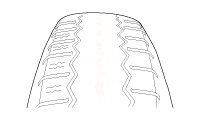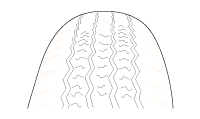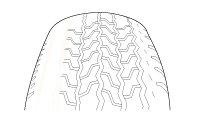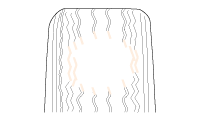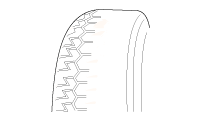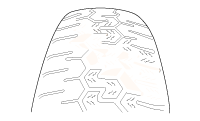 Hyundai Santa Fe: Troubleshooting
Hyundai Santa Fe: Troubleshooting
Troubleshooting
|
Symptom |
Possible cause |
Remedy |
|
Hard steering |
Improper front wheel alignment Excessive turning resistance of lower arm ball joint Low tire pressure No power assist |
Correct Replace Adjust Repair and replace |
|
Poor return of steering wheel to center |
Improper front wheel alignment |
Correct |
|
Poor or rough ride |
Improper front wheel alignment Malfunctioning shock absorber Broken or worn stabilizer Broken or worn coil spring Worn lower arm bushing |
Correct Repair or replace Replace Replace Replace the lower arm assembly |
|
Abnormal tire wear |
Improper front wheel alignment Improper tire pressure Malfunctioning shock absorber |
Correct Adjust Replace |
|
Wandering |
Improper front wheel alignment Poor turning resistance of lower arm ball joint Loose or worn lower arm bushing |
Correct Repair Retighten or replace |
|
Vehicle pulls to one side |
Improper front wheel alignment Excessive turning resistance of lower arm ball joint Broken or worn coil spring Bent lower arm |
Correct Replace Replace Repair |
|
Steering wheel shimmy |
Improper front wheel alignment Poor turning resistance of lower arm ball joint Broken or worn stabilizer Worn lower arm bushing Malfunctioning shock absorber Broken or worn coil spring |
Correct Replace Replace Replace Replace Replace |
|
Bottoming |
Broken or worn coil spring Malfunctioning shock absorber |
Replace Replace |
Wheel /tire noise, vibration and harshness concerns are directly related
to vehicle speed and are not generally affected by acceleration, coasting or
decelerating. Also, out-of-balance wheel and tires can vibrate at more than
one speed. A vibration that is affected by the engine rpm, or is eliminated
by placing the transmission in Neutral is not related to the tire and wheel.
As a general rule, tire and wheel vibrations felt in the steering wheel are
related to the front tire and wheel assemblies. Vibrations felt in the seat
or floor are related to the rear tire and wheel assemblies. This can initially
isolate a concern to the front or rear.
Careful attention must be paid to the tire and wheels. There are several
symptoms that can be caused by damaged or worn tire and wheels. Perform a careful
visual inspection of the tires and wheel assemblies. Spin the tires slowly and
watch for signs of lateral or radial runout. Refer to the tire wear chart to
determine the tire wear conditions and actions
|
Wheel and tire diagnosis |
||||||||||||||||||||||||||
|
Rapid wear at the center |
Rapid wear at both shoulders |
Wear at one shoulder |
||||||||||||||||||||||||
|
|
|
|
||||||||||||||||||||||||
|
|
|
||||||||||||||||||||||||
|
Partial wear |
Feathered edge |
Wear pattern |
||||||||||||||||||||||||
|
|
|
|
||||||||||||||||||||||||
|
|
|
||||||||||||||||||||||||
 Special Service Tools
Special Service Tools
Special Service Tools Tool (Number and Name) IIIustration Use 09546-26000 Strut spring compressor Compression of coil spring ...
See also:
Do not lie down
To reduce the chance of injuries in the event of an accident and to achieve maximum effectiveness of the restraint system, all passengers should be sitting up and the front and rear seats should be in ...
Inside Rear View Components and Components Location
Component Location 1. Inside rear view mirror ...
Cooling Fan. Components and Components Location
Components 1. Upper air guard 2. PWM module 3. Cooling fan shroud 4. Fan motor 5. Cooling fan ...

